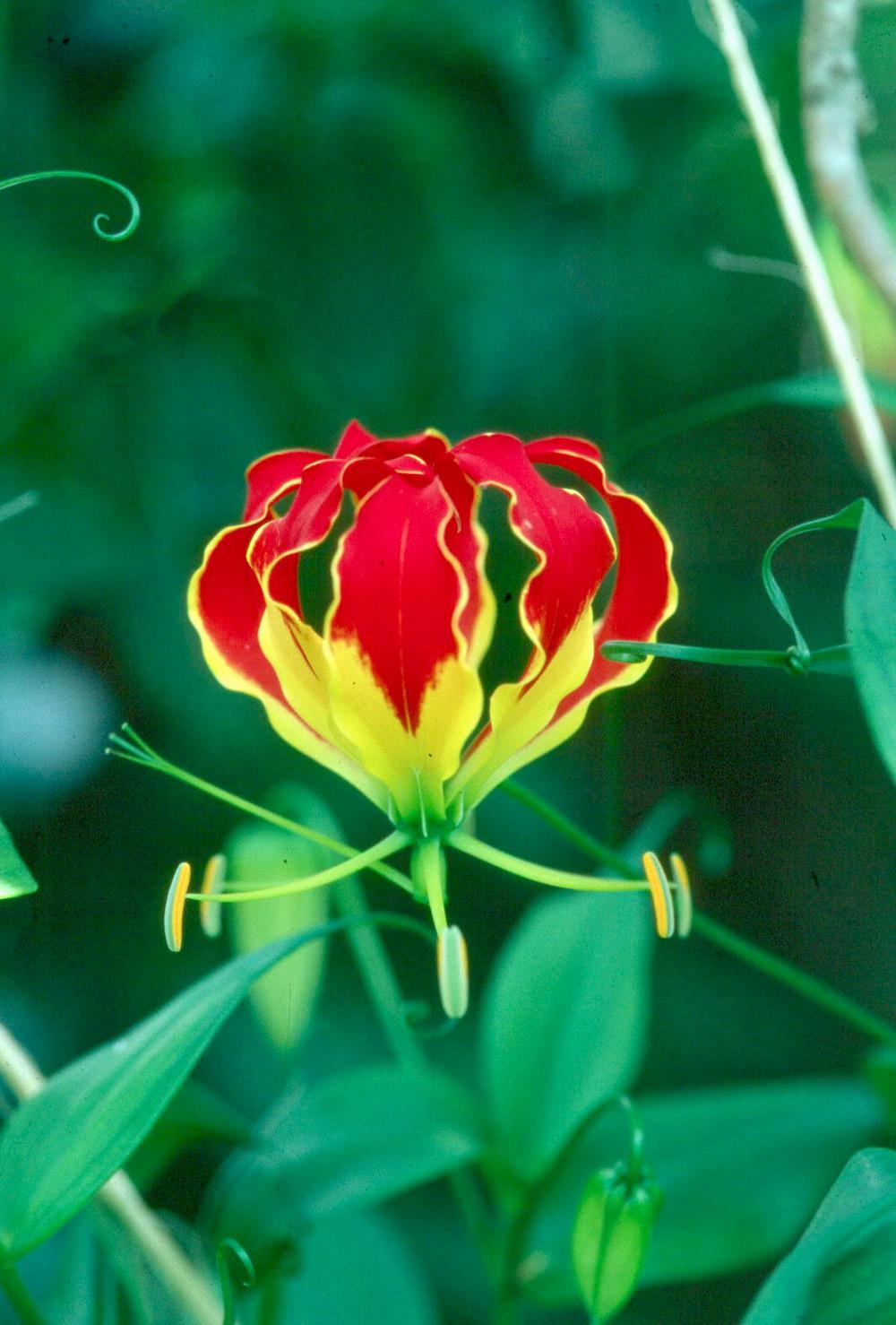Information Possibly Outdated
The information presented on this page was originally released on July 13, 2006. It may not be outdated, but please search our site for more current information. If you plan to quote or reference this information in a publication, please check with the Extension specialist or author before proceeding.
Glory lily vines are exotic and wonderful
By Norman Winter
MSU Horticulturist
Central Mississippi Research & Extension Center
The glory lily is one of the most exotic flowering vines we can grow in the Southern garden. Its first blooms will take your breath away by their color and intricate structure.
Most people will recognize them immediately as tropical in origin. They are from tropical Africa and Asia and are the national flower of Zimbabwe. I like the glory lily's botanical name, Gloriosa superba, because we can paraphrase by calling it gloriously superb.
Another thing I love about the plant is that it makes us horticulturists look pretty naive. Most books say that it is a perennial in zones 10-11 only. In my book, Paradise Found, I stretched it a little and said it could be included in zone 9.
Since that day, I have seen it growing and returning in Kosciusko, Tupelo and even Little Rock, Ark. Even last month I ran into a beautiful plant at a friend's house in Richland. When asked how he'd protected it through the winter, he confessed to forgetting it outside in a container all winter. He thought it was dead until it came back in the spring as if celebrating the warm season.
I figure the glory lily is just one of hundreds, perhaps thousands, of plants that we really haven't tried either because they are hard to find or we assume everything we read is correct. I think some of our most fun time as gardeners is when we simply evaluate plants on our own, assuming nothing.
The glory lily is a vigorous vine, not passionflower or kudzu like, but just perfect for a trellis or small arbor. They will generally climb from eight to 12 feet. The flowers are spidery, lily-like with six bright red petals with yellow margins, and long protruding stamens.
Many get their first glory lilies as tubers in a box or package. The tubers can be started early in late winter indoors for transplanting later or planted in the ground once the weather has warmed. The location should receive plenty of sunlight. Those I have liked best were in morning sun and afternoon shade. The full sun plantings looked a little stressed.
In containers, the soil should be light and airy. In the landscape, plant them in organic-rich, well-drained soil. Place tubers 2 inches deep, laying them flat on their side. Once growing, feed monthly with light applications of a slow-released, balanced fertilizer.
Grow in a tropical garden or on a trellis behind elephant ears, bananas or cannas. They also are well suited to cutting, lasting eight days in the vase.
As you head into fall, gradually reduce watering and add a layer of mulch to protect the ground from cool, damp conditions. Soggy winter soil will most likely prove to be fatal.
The glory lily gives you another great option, however. If you are willing, the dormant tubers can be dug carefully, placed in peat moss and brought inside to protect them from freezing temperatures below 20 degrees. They also can be divided after the vine dies back. Be sure to include a growing point on each division.
Keep your eyes open for varieties like Rothschildiana, which is scarlet; Citrina, which is yellow; and Simplex, which is orange and yellow.
If you have grown the glory lily, let me know how you fared; if you haven't, now is a good time to give it a try.




